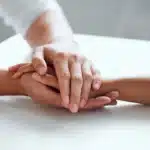The addiction recovery journey is a lifelong process. As such, it requires lots of tools for managing cravings in recovery that you can use at different stages. Each tool you acquire can help you achieve and maintain your sobriety.
You may continue to experience cravings immediately after treatment, as your brain chemistry and body continue to revert back to how they were before addiction. But this can be a slow process, one which requires reliable tools to help you get through it.
Top Tools for Managing Cravings in Recovery
So, what are the best tools for managing cravings in recovery?
Therapy
The best tool is therapy. Therapy can help you understand any underlying mental health disorders contributing to your addiction and give you individualized resources for managing cravings. Group therapy can also help you develop the peer support that is so important to your long-term success.
Support
You can find support from:
- Friends
- Family
- Support groups
- Peers
- Coworkers
- Therapists
Support from others is important because it gives you people you can turn to when you are triggered, stressed, overwhelmed, or just need something positive, like a quick coffee visit and a chat.
Peer support also gives you access to people who understand what you have been through and respect your sobriety goals moving forward. It can be difficult to maintain friendships with people who you used to regularly do drugs or drink with, because it may be likely that the environment in which you socialize will be full of triggers.
Routine
A healthy routine is among the most important tools for managing cravings in recovery. When you attend treatment at The Differents, one of the first things you will notice is the use of a rigid schedule for each of your services and sessions.
Why does this matter?
Psychologically, having a routine takes away a lot of guesswork and decision-making throughout the day. The more structure you have, the less likely it is that you will find yourself with idle time and distractions. Moreover, the more structure you have, the less willpower you have to invest in making decisions like:
- What to eat
- What to do next
- When to exercise
- What to wear
- Where to go after work
Each time you have an established routine for a meal, an activity, or your schedule, you free yourself from having to use willpower and can instead use that energy for the inevitable stresses or triggers that can surprise you.
Medication
For many people, one of the best tools for managing cravings in recovery is medication. Medication can be a very useful tool in preventing relapse by helping you control cravings.
In extreme cases, medication through FDA-approved programs can inhibit the positive and euphoric effects of drugs like opioids or cause you to get very ill if you drink alcohol. Medications like these go a long way toward helping you control any possible relapses.
Exercise
Exercise is an often underappreciated tool, but it can help you manage cravings nonetheless. At some treatment centers, you can learn about yoga and outdoor therapy, which can help you establish exercise routines that you can use in recovery.
Yoga, for example, is particularly useful in aiding with cravings because it teaches you to accept the temporary nature of discomfort as you hold physically demanding poses. Concurrently, it teaches you to focus on your breathing, which is inside of your control, when you are at your limit. These skills can be applied to any situation where you experience extreme cravings or stress.
Diet
What you eat matters in recovery. Your mind and body need to heal after substance abuse, and it is during that vulnerable healing process that you will experience cravings. Giving in to foods rich in sugar and additives will only make it harder on you. But by learning which foods can help manage different emotions or which foods indicate a missing nutrient (like how a craving for chocolate might actually indicate a magnesium deficiency), you can control cravings big and small.
Building Tools in Treatment
When you attend outpatient rehab with The Differents, you will learn about several tools that help you manage your cravings. At our trusted drug rehab, we help you build a routine so that you are familiar with the structure when you transition back to your regular life.
As part of our levels of care, we give you access to several forms of holistic tools for managing cravings like:
- Outdoor therapy, which can encourage you to develop new skills and embrace the changing power of being outdoors
- Recreational therapy, which can introduce you to new hobbies and recreational activities that strengthen your body and mind as one
- Yoga and pilates, which is an invaluable tool for bringing your focus back to the present and to things within your control, like your breathing
There are many tools for managing cravings in recovery. When you work with reliable, professional treatment centers like The Differents, you can learn which tools work best for you, practicing them in real-time during your program.
Contact us today to learn more about our substance abuse treatment programs and how they can help you.





